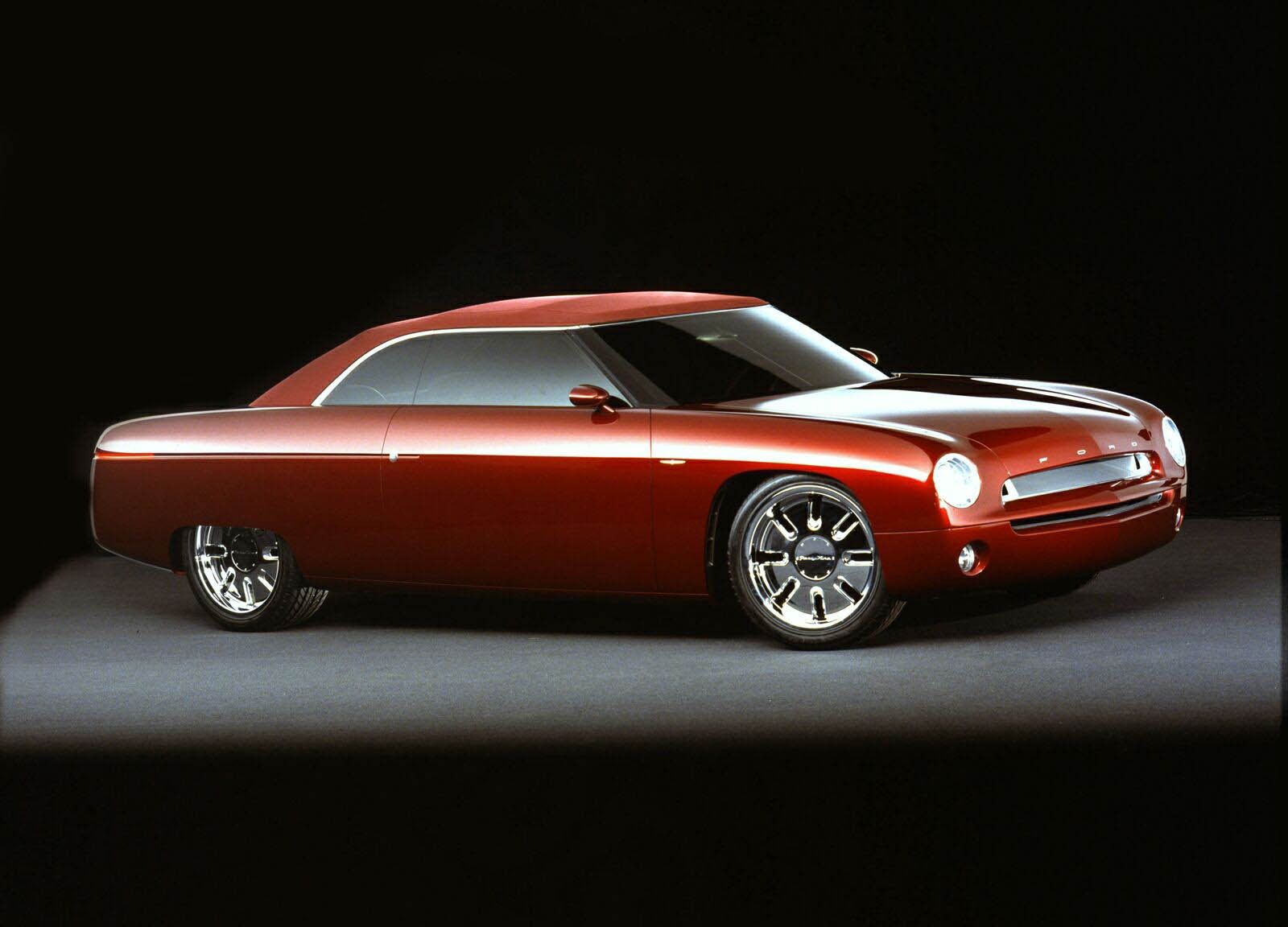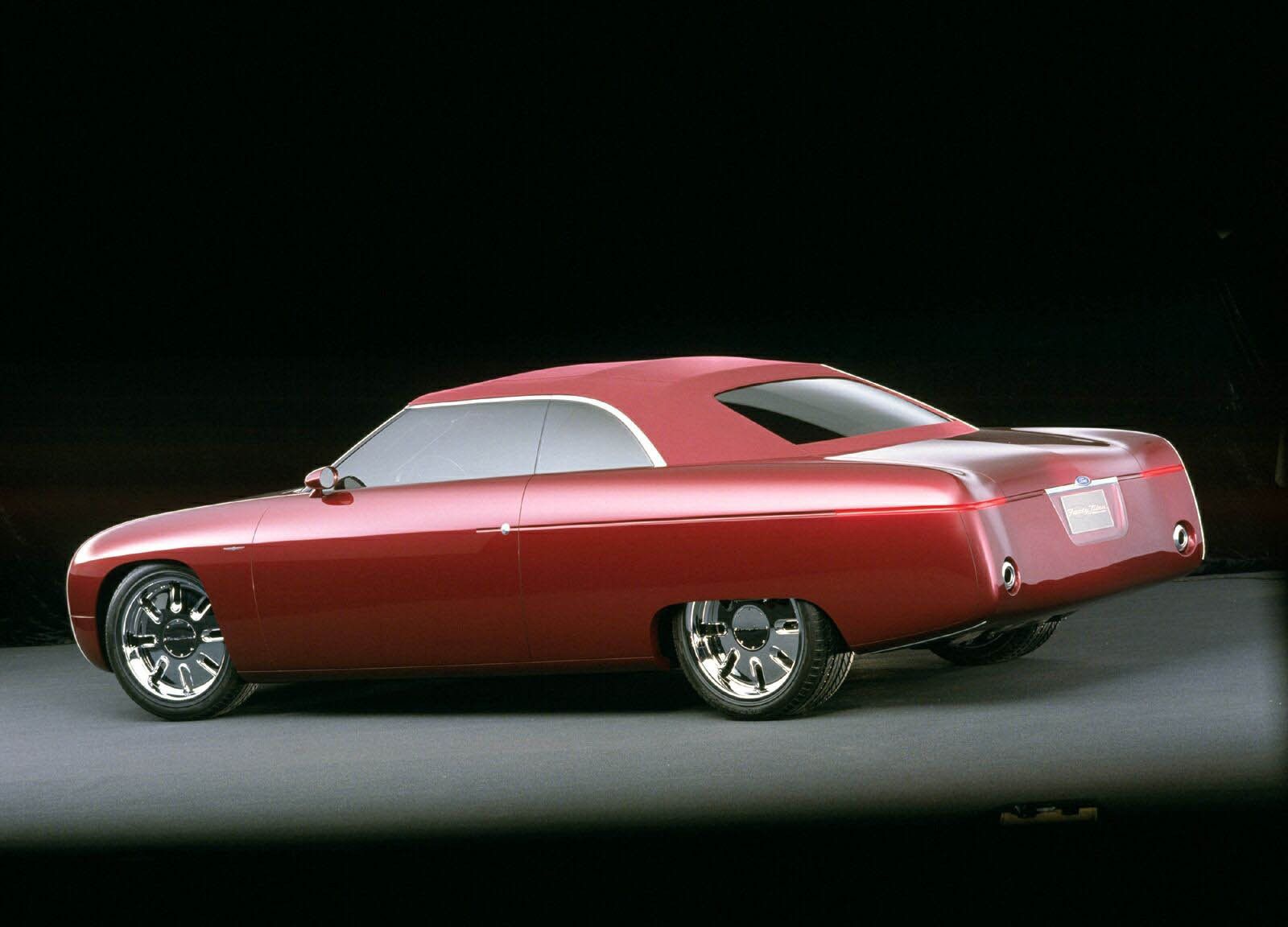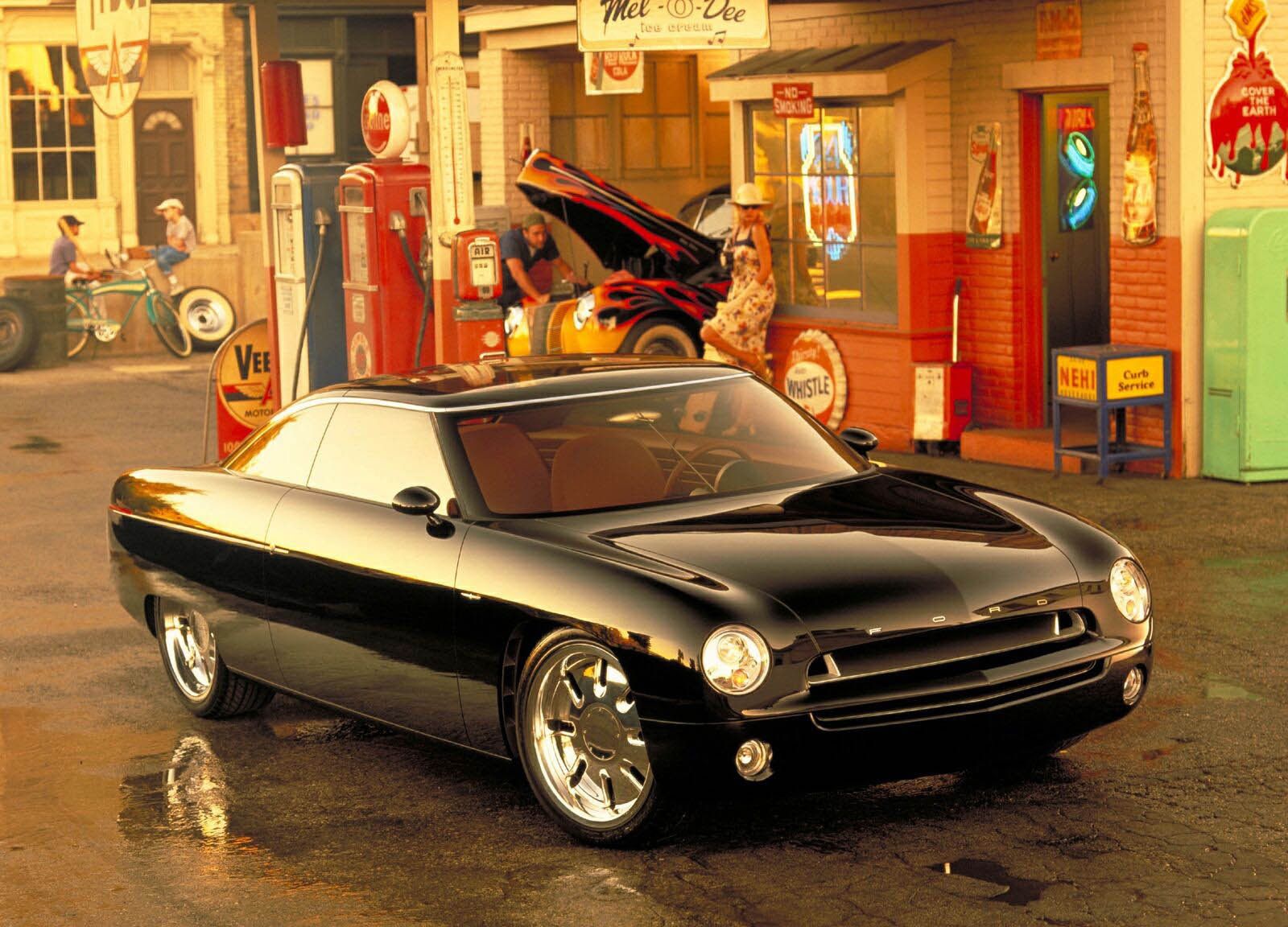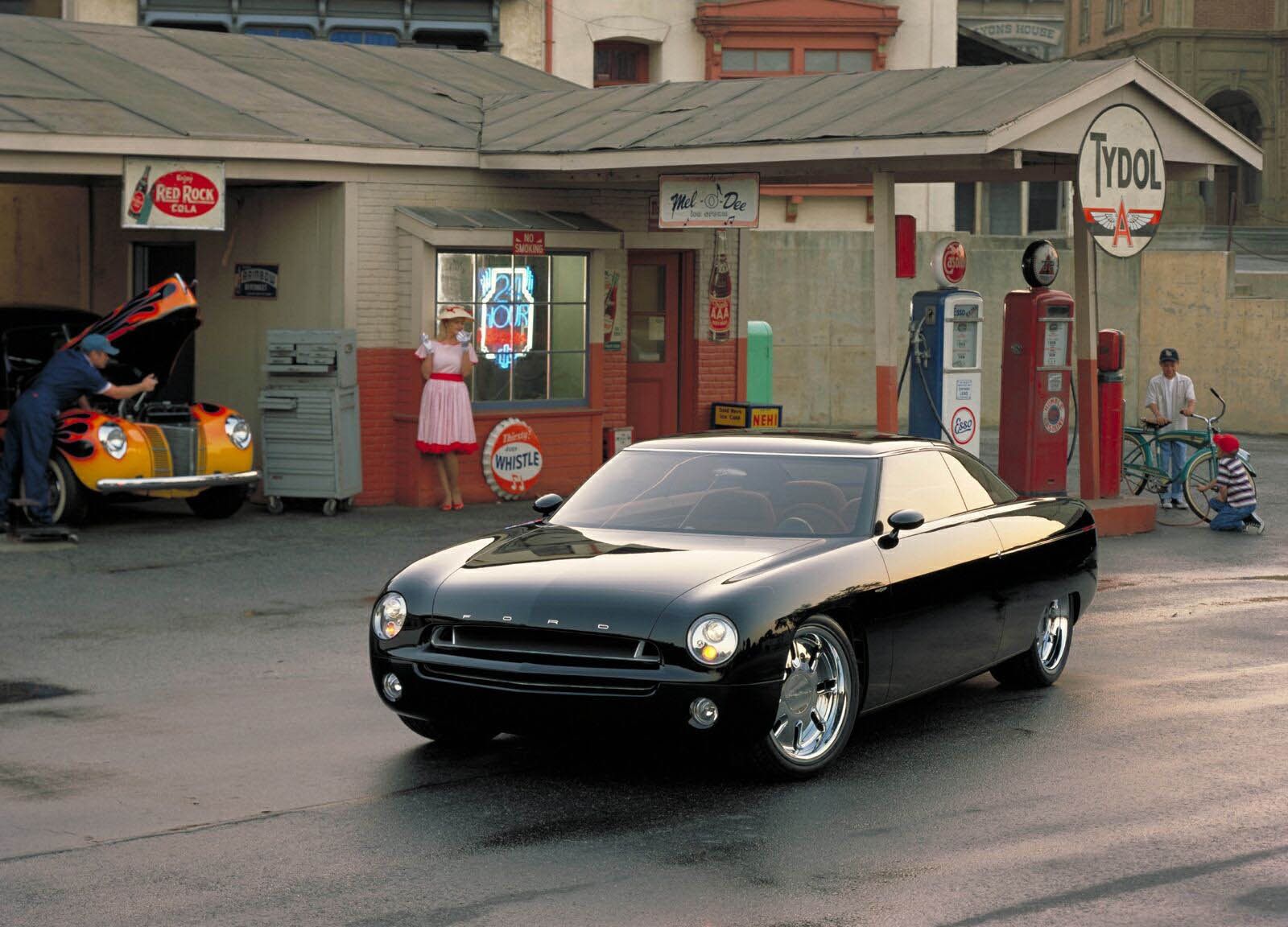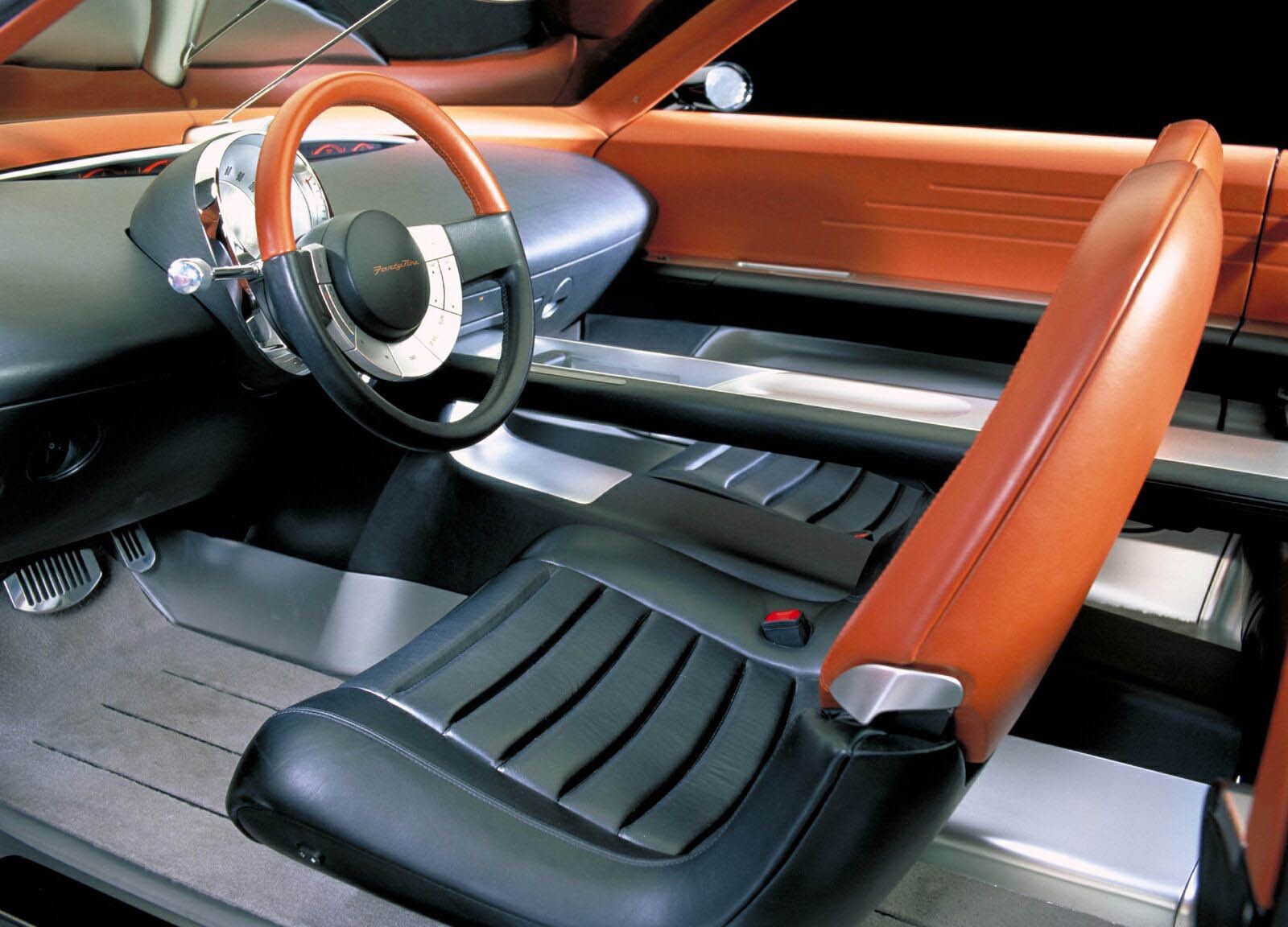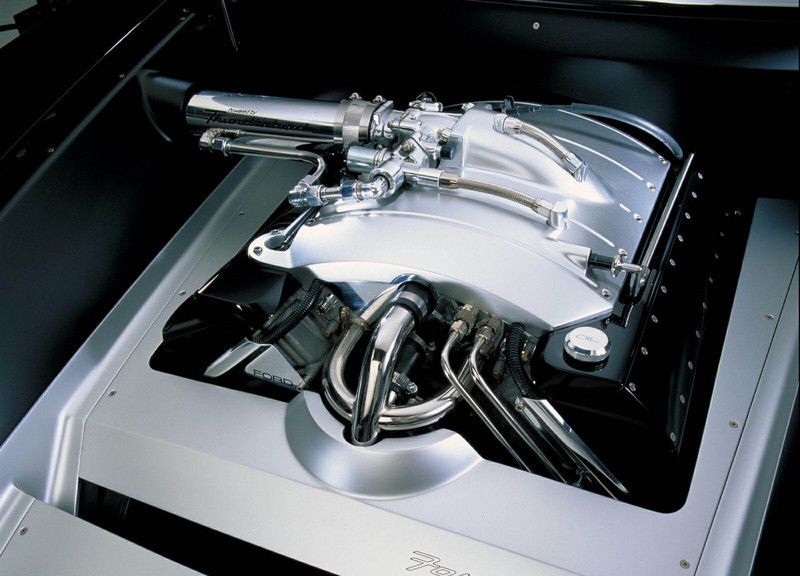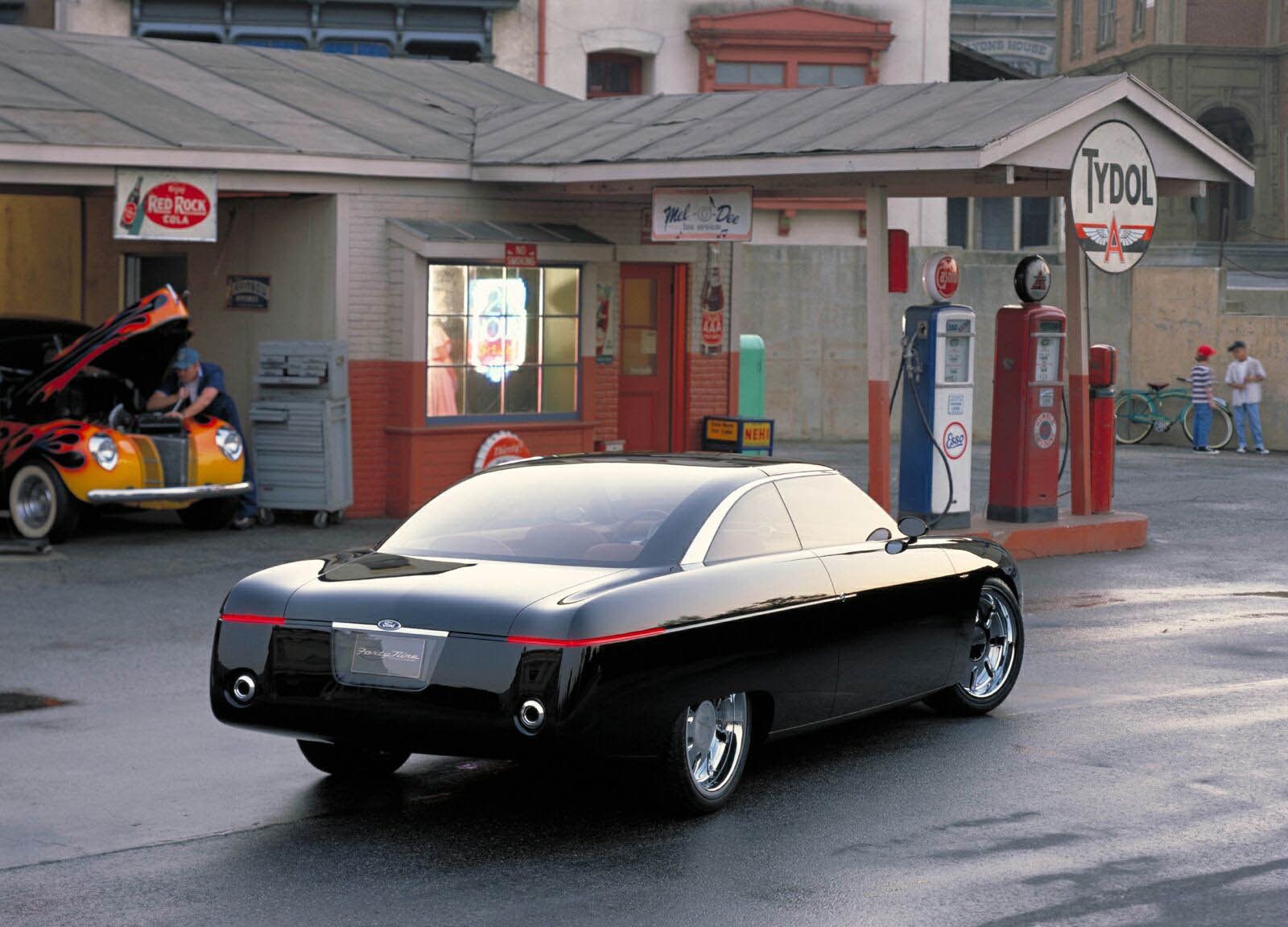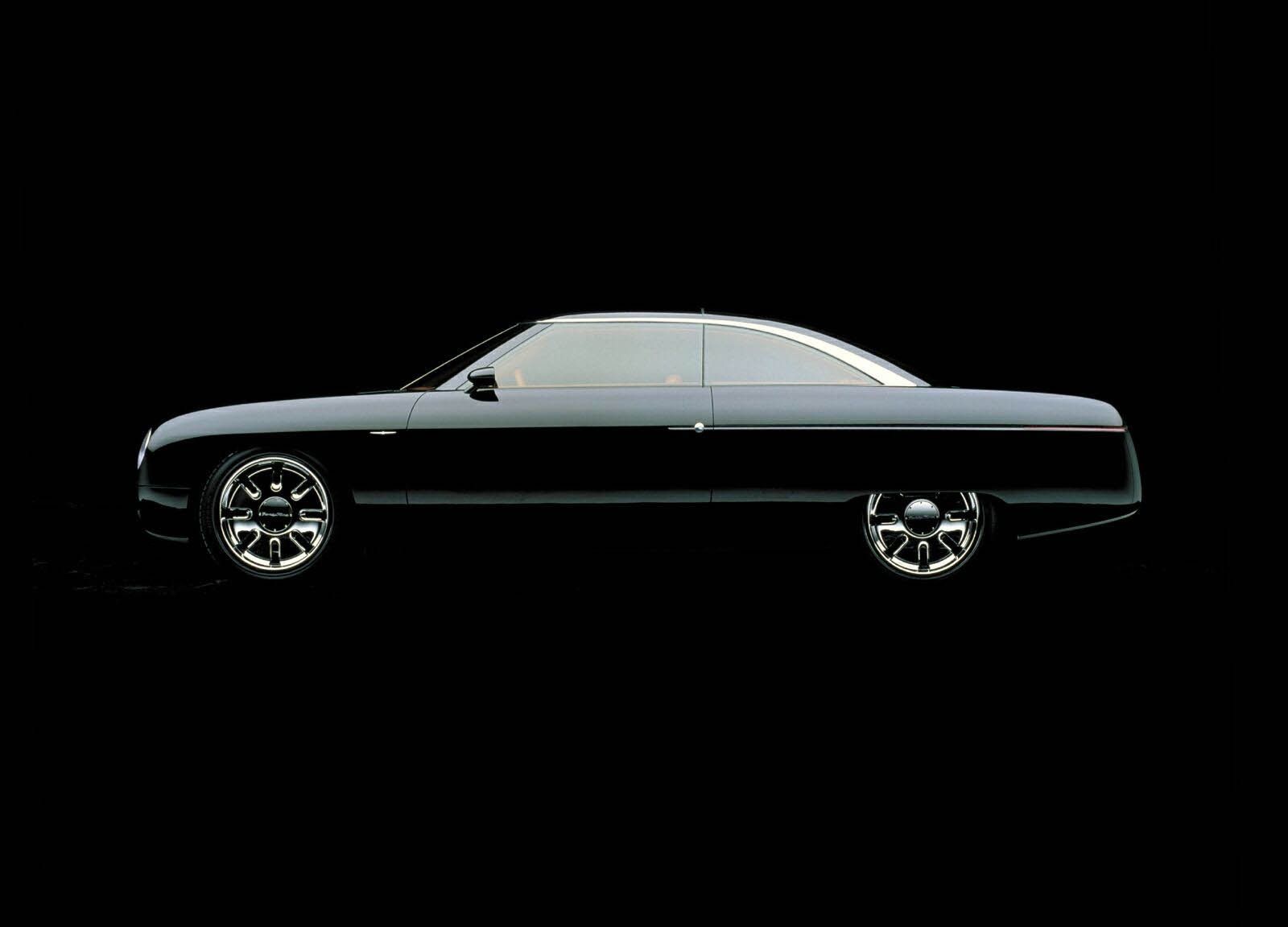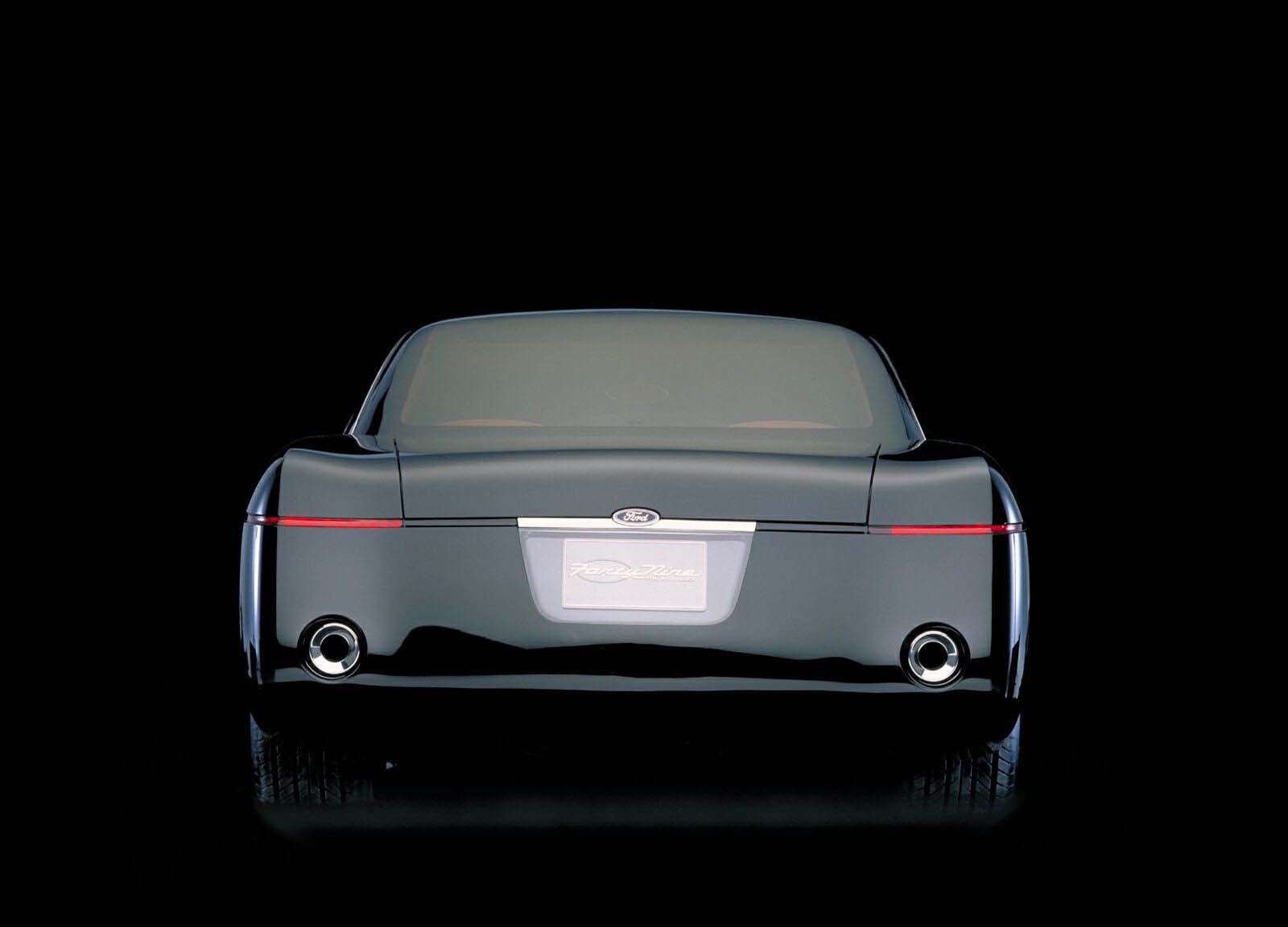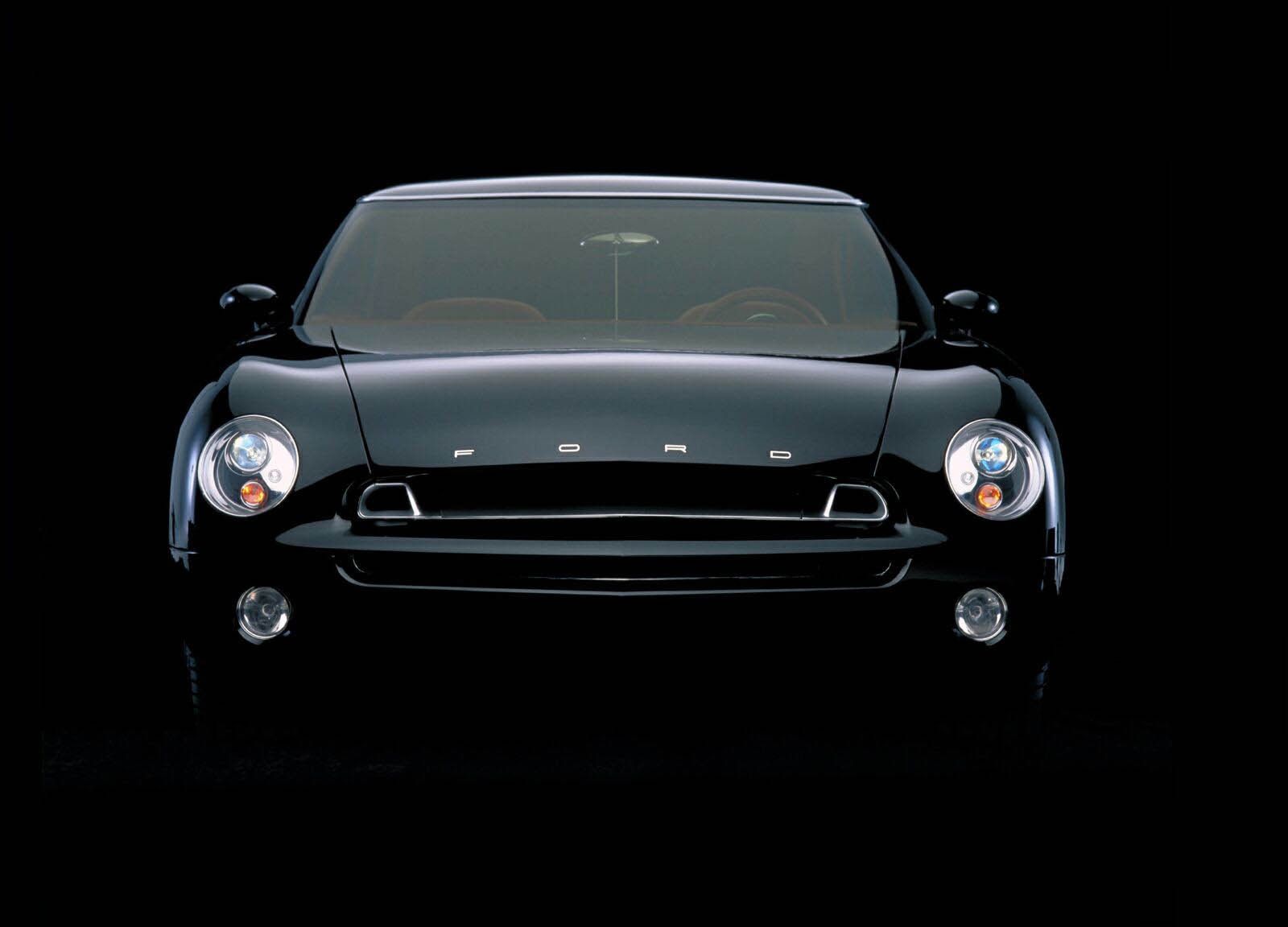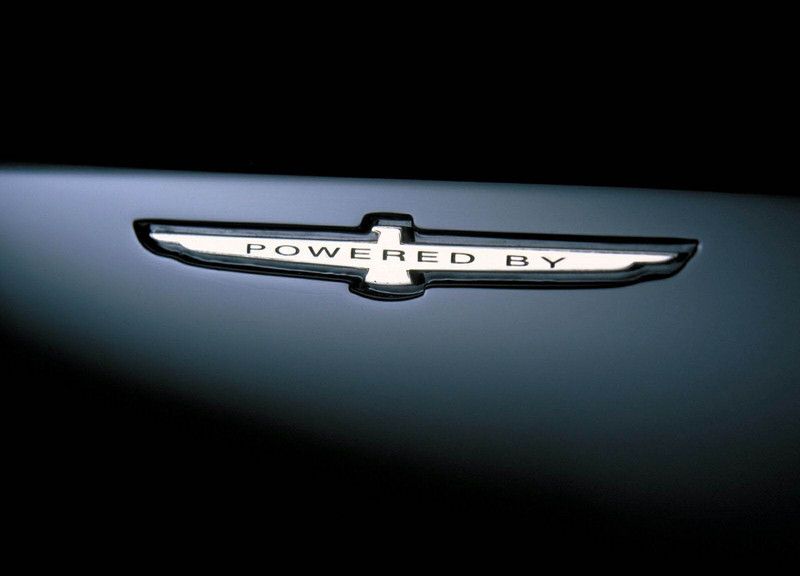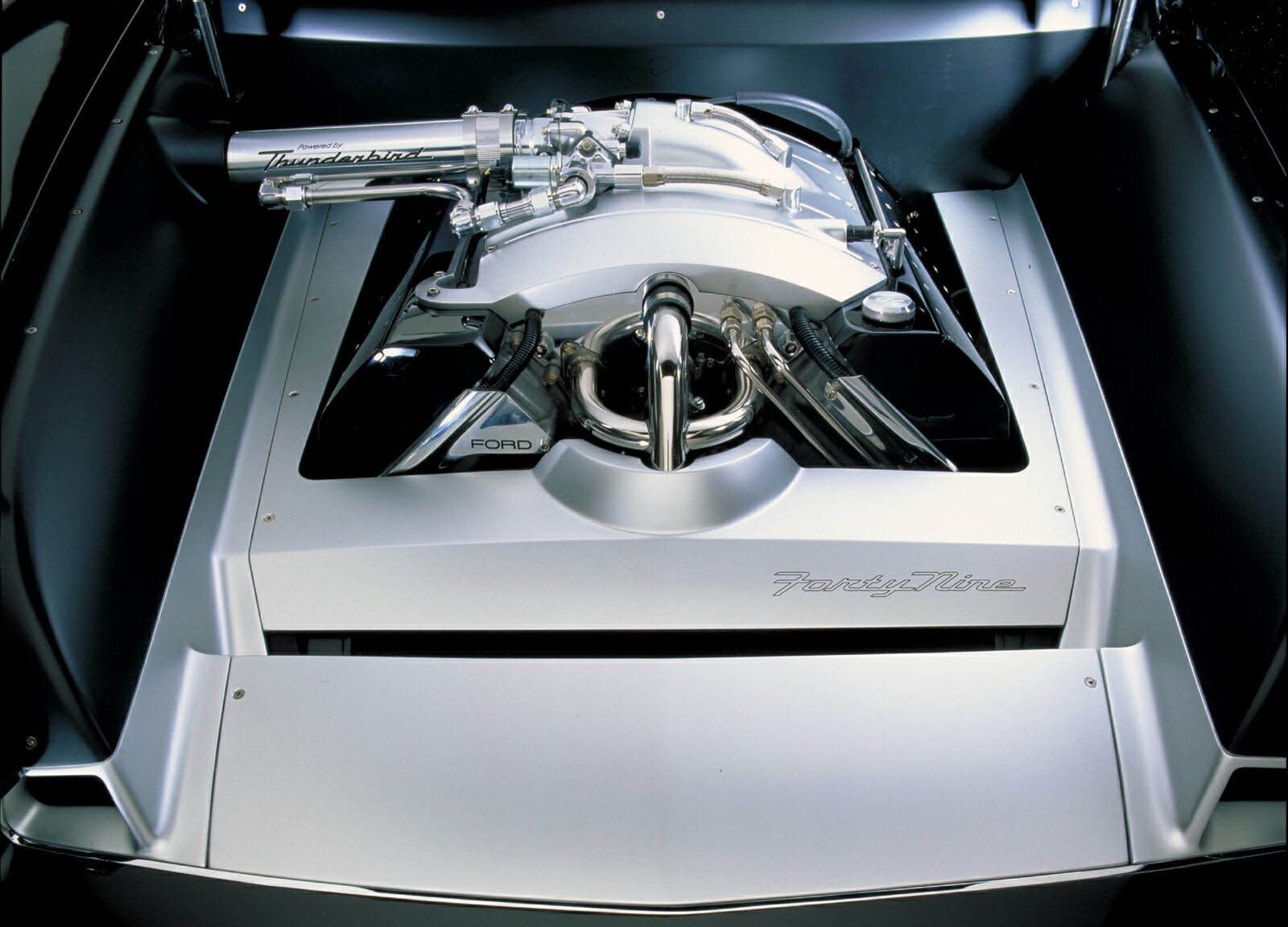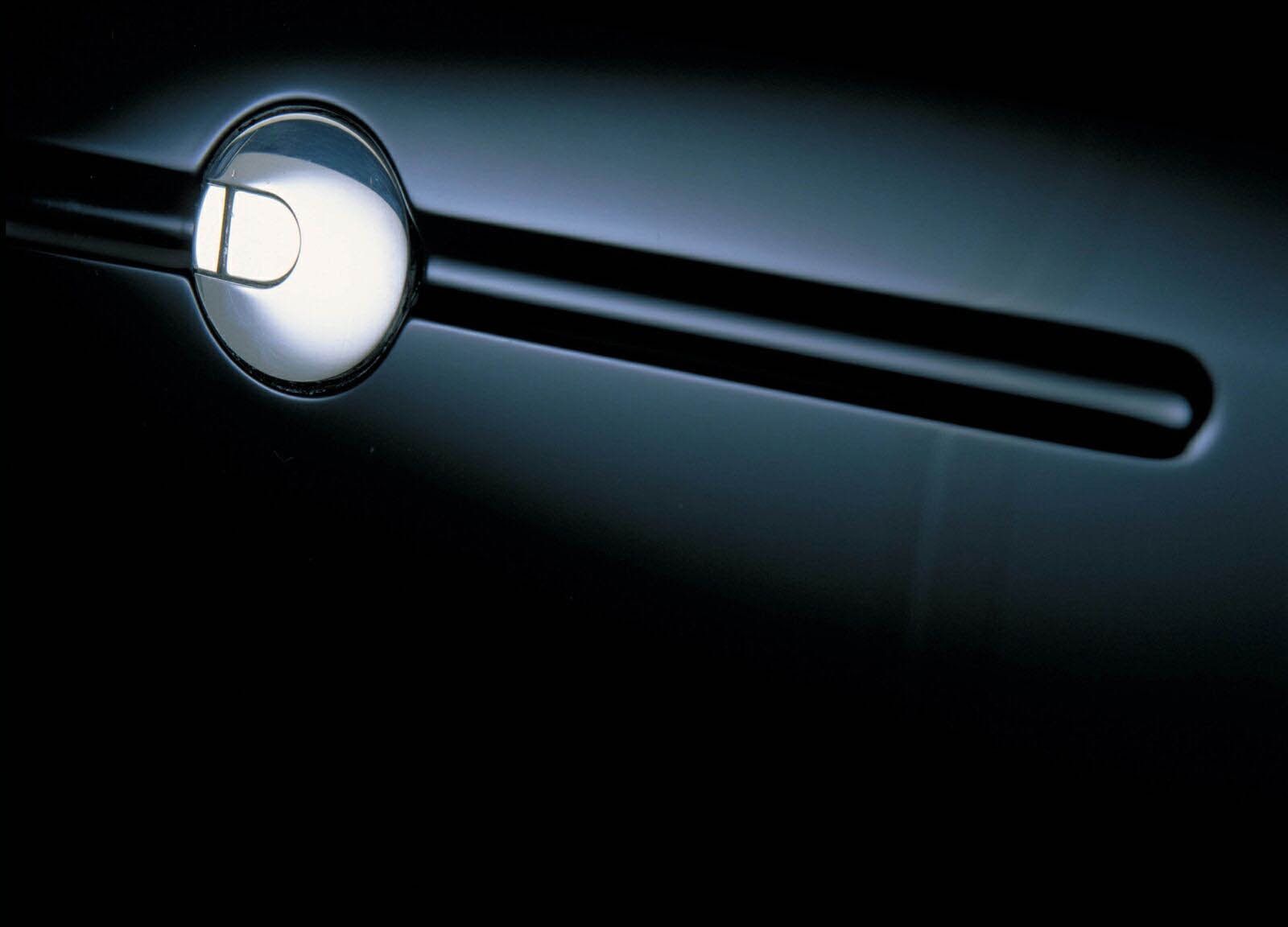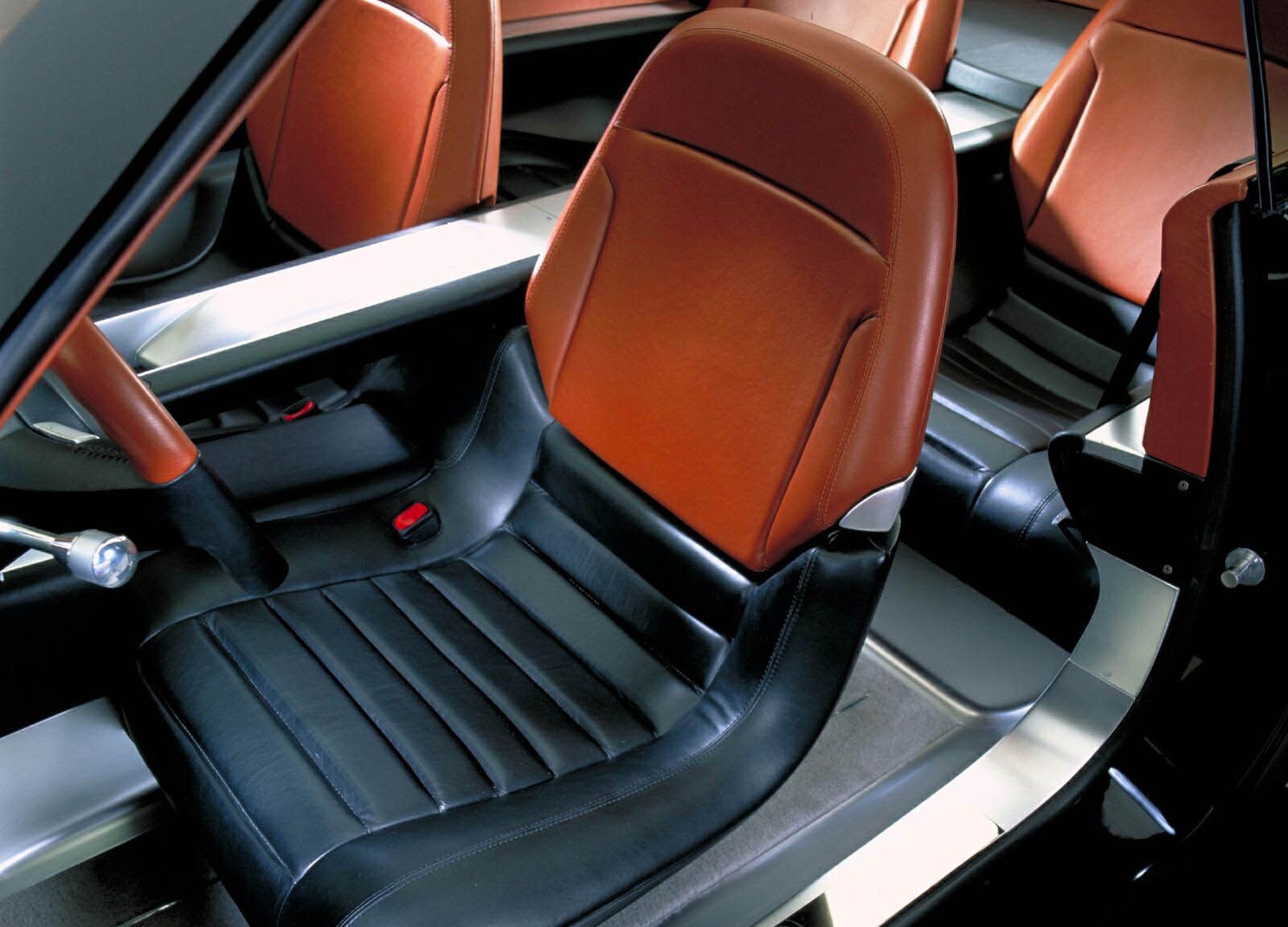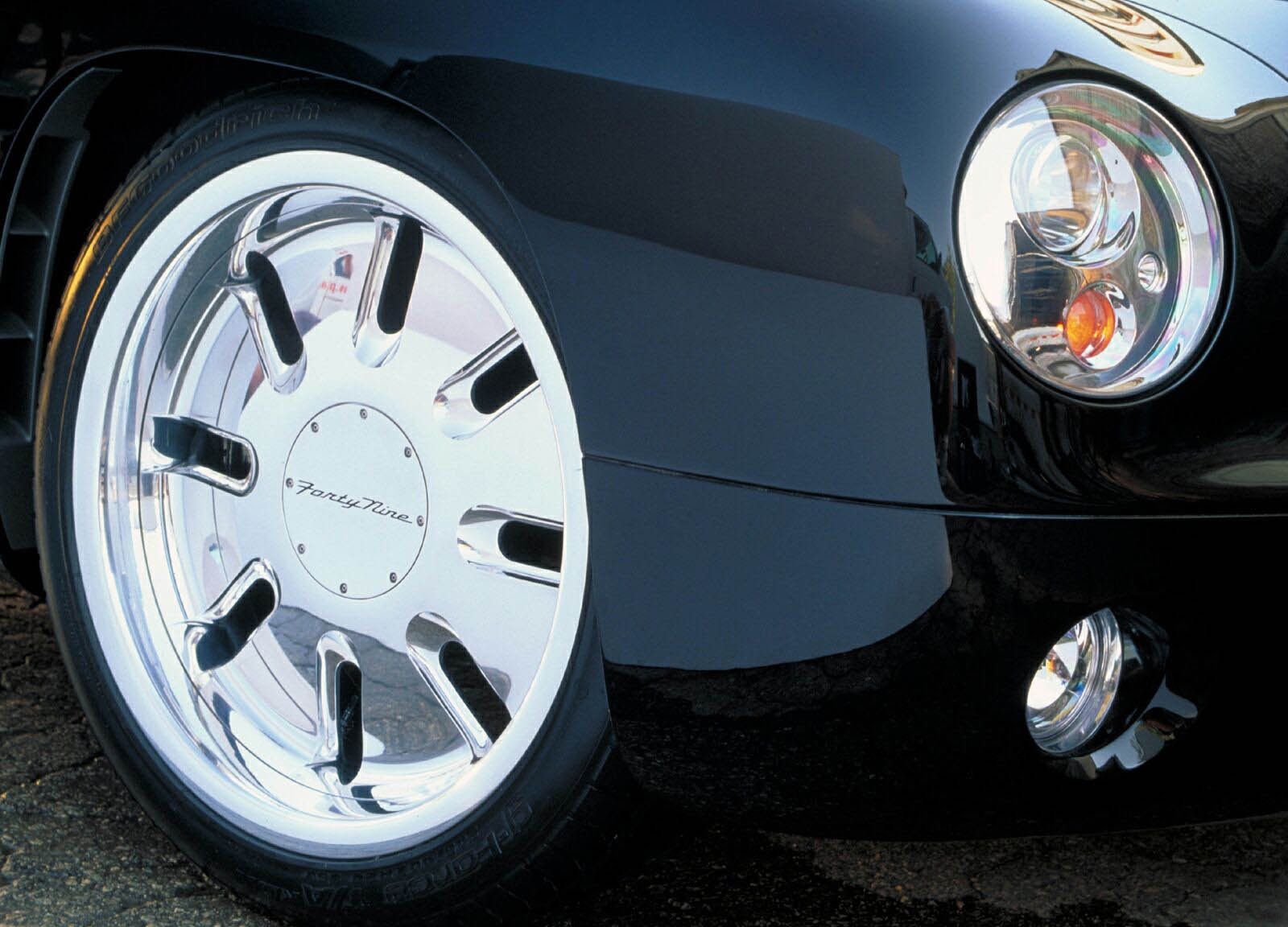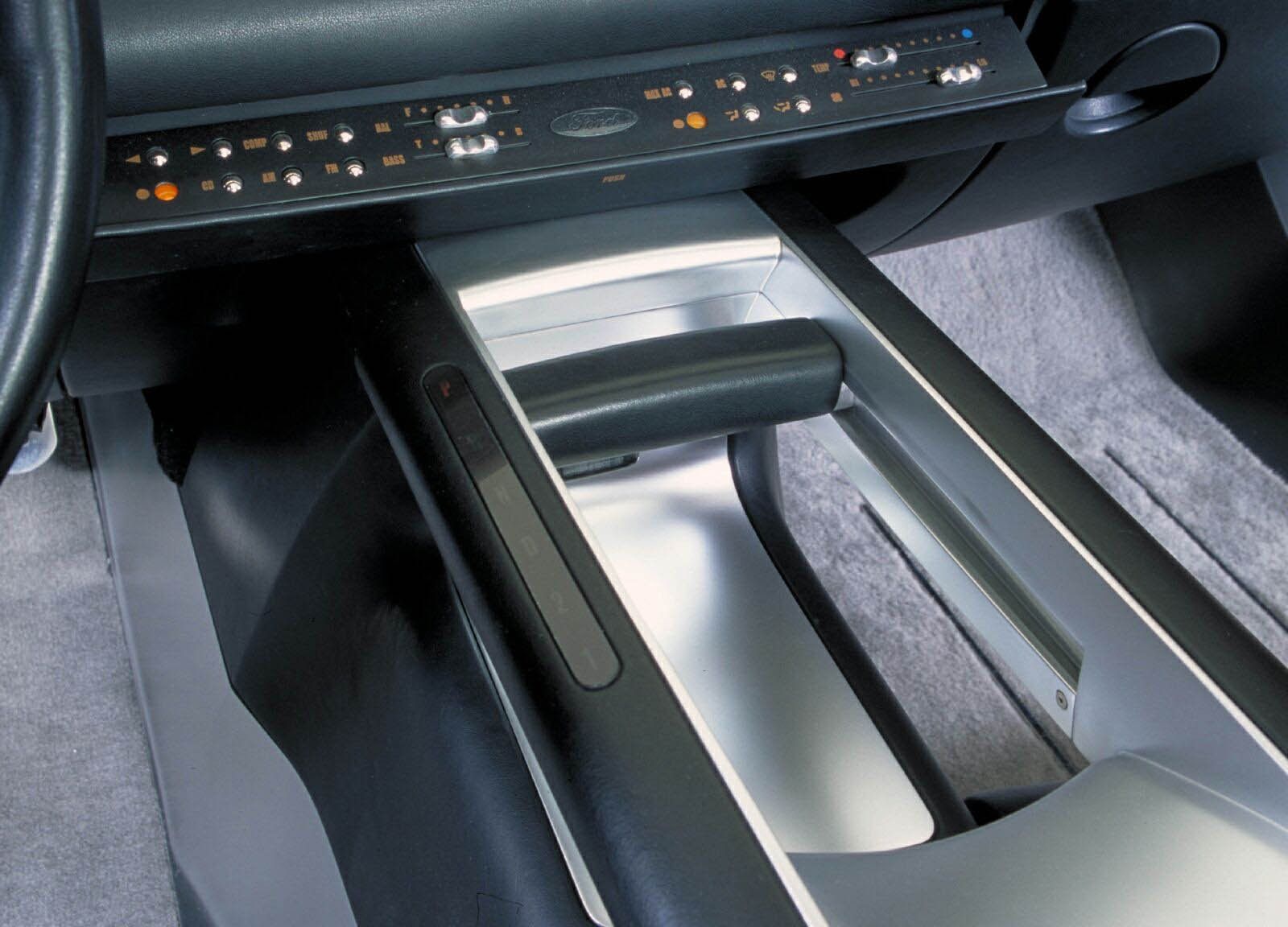he year was 1949. After years of wartime sacrifice and sameness in durable goods, postwar America was ready for an automotive design revolution. The '49 Ford - with radically new "slab sides," integrated body and fenders, independent front suspension and rear quarter windows that opened - served as a symbol of optimism for the future.
2001 Ford Forty Nine
- Make: Array
- Model: 2001 Ford Forty Nine
- [do not use] Vehicle Model: Array
Fifty years later, the Ford Forty-Nine custom coupe concept is taking Americans for a sentimental drag race down memory lane. It’s classic shape and brilliant proportioning underscore Ford’s ongoing commitment to design emotion into all its new cars and concepts.
The Forty-Nine concept harkens back to the romance of a Friday night at the drive-in or bowling alley, listening to rock-and-roll and cruising in a chopped and channeled custom car.
“The inspiration for the Forty-Nine concept comes from the passion and excitement of the original, combined with the imagination of people across America who customized the car and turned it into what they thought a really great car should be,” says J Mays, Ford Motor Company vice president of Design.
“The concept melds together many of the custom car designs from the 1950s as well as elegant cues and shapes from some of the great Italian designs, such as Ghia,” adds Mays. As soon as it was introduced in New York City amid much fanfare in June 1948, the original ’49 Ford became a runaway sensation. As the first all-new, postwar Ford design, the car attracted 1.3 million orders even before it officially went on sale at dealerships. The design was so acclaimed that it won the prestigious Fashion Academy Award in 1949 and repeated the rare honor in 1950.
With a modern, slab-side design featuring front fenders, body sides and rear quarter panels flowing together to form one continuous line from head to taillights, the ’49 Ford served as a compass pointing to the future. It boasted a “dream car” silhouette as well as a simple grille and balanced greenhouse. The car’s advertisements heralded its “mid-ship” ride, “hydra-coil” springs, “picture window” visibility, “Magic Action” king-size brakes and “sofa wide” seats built to deliver living-room-like comfort.
The ’49 Ford fit perfectly into America’s cruisin’ and car customization craze, which reached a frenzy in the late 1940s and early 1950s. Teenagers across the country began snapping up the car, tinkering with the engine to make it go faster, reshaping the body to make it look sportier and reworking the suspension to achieve an altered ride. The 1949-51 Ford coupes were considered some of the most desirable cars to chop and channel.
Back to the Future
To create the all-new Forty-Nine concept, Ford designers went back to the car’s roots – simple shapes, excellent proportions, clean body panels and modern conveniences.
The Forty-Nine concept’s hyper-smooth appearance is achieved by an all-glass upper body structure with concealed pillars and windshield wipers. The exterior finish is velvety black with bright chrome wrapping around the greenhouse and modest chrome accents elsewhere, such as its badging and 20-inch chrome wheels.
Clean, simple and elegant design cues are conveyed in the rounded high intensity discharge (HID) and projector-beam front lighting. In the rear, sleek, narrow, wrap-around LED tail lamps make a distinctive statement.
The Forty-Nine’s interior also is a modern interpretation of the original car’s simple design cues. A cantilevered, bench-style front seat is power-actuated. A floating center console runs the entire length of the interior, giving the impression of four-passenger bucket seating, while also serving to stiffen the vehicle’s structure. The floating console houses the five-speed shift lever and ventilation system for both front and rear seat passengers.
The interior color theme is two-tone: black and sienna. The black leather seats have sienna leather seat backs. Sienna leather also accents the upper door trim panels, instrument panel and package tray. The armrest is wrapped in charcoal leather. The lower door trim panels are finished in satin metallic silver. The silver carpet inserts are accented with chrome rails running the front to rear.
The car’s primary gauges are contained within a single round instrument binnacle – similar to the production ’49 and hot rods of the era. The analog tachometer takes center stage and is surrounded by the electronic speedometer. Audio and climate controls are presented in a flip-out panel located in the instrument panel, just ahead of the shifter. Their respective readouts, along with temperature, oil and fuel gauges, are displayed on either side of the centrally mounted clock, at the base of the windshield.
A two-tone, leather-wrapped steering wheel features cruise and radio controls on a metal ring, reminiscent of the “horn-ring” popular in the 1950s.
The rear view mirror is positioned along a prominent “wind-split” rod, which extends from the instrument panel to the windshield header. The rear-view mirror can be adjusted up or down along the length of the rod, which serves multiple purposes: it also houses the radio antenna, which extends up into the roof.
The audio system features a multi-disc CD changer and a strategically placed speaker network, anchored by a massive sub-woofer, all driven by a 200-watt power amplifier.
The design under the hood is an obvious extension of the overall design philosophy and pays homage to hot-rodders’ obsession with performance and appearance.
The engine bay is finished in satin black, stainless and chrome metal finishes. The radiator and its associated structure have been re-oriented to take full advantage of the design opportunities on the engine itself. The intake manifolds are finished in satin metal and the valve covers in gloss black, accented with polished stainless steel. Filtered interior air inlets are located at the trailing edge of the front wheel opening, and dual stainless steel exhausts penetrate the rear bumper fascia.
The engine bay is not only cosmetic: the chrome “Powered by Thunderbird” badge on the side fender gives a hint at the powerplant under the hood. And indeed, the concept is powered by a Thunderbird-sourced 3.9-liter, DOHC, 32-valve V-8, tuned to fit the car’s appearance and refined muscle.
“Like all the Living Legends, the Forty-Nine reminds us of the love affair that generations have had with the open road and the automobile,” says Mays. “It remind us of a romance and a passion of the American touring car that is just as thrilling today as it was 50 years ago.”

